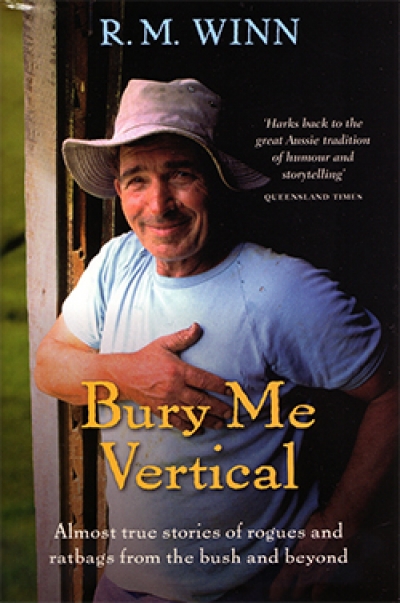Memoir
Reaching One Thousand: A Story of love, motherhood and autism by Rachel Robertson
At some stage in every workshop on the art of memoir somebody raises the question of ethics, of privacy, and of who has the right to tell a version of a story. How far, the author of Reaching One Thousand asks, is she prepared to ‘sacrifice other people’s privacy’? What betrayals will she ‘perpetrate on others’?
... (read more)In writing Bite Your Tongue, Francesca Rendle-Short, who is director of Creative Writing at RMIT University, has chosen a thorny tale. She dedicates the book to her mother, Angel, who is clearly a formidable personality: Northern Irish; medical doctor; mother of six daughters; Christian activist; ‘book burner’. Early on, we are told that ‘some stories are hard to tell, they bite ...
Memoir, it seems, is proliferating ever more furiously in Australia, filling bookshelves and review pages like bacteria in still water. We are insatiable in our appetite to read and write memoir, to feel the ‘real’. As a memoirist myself, I am all too aware of my hypocrisy in feeling uneasy about this rage for introspection. But memoir is most successful when it portrays an extraordinary individual; or gives witness to an important experience (accounts of Holocaust survivors, say); or when the personal resonates with the universal, and one person’s experience becomes a prism for that of many. A memoir that hesitates to claim such reader-oriented ratifications risks being a tedious assembly of anecdotes, a public catharsis, or mere narcissism.
... (read more)In the past, a twenty-something could exemplify le dernier cri without having to dispense with his bicycle gears, reflectors, and brakes. Worry not. An infinitely cooler trend – less prone to vehicular mishap – is doubtless on its way to erase fixed-gear bikes, or ‘fixies’, from the palimpsest that is sub-cultural fashion. HipsterMattic, blogger Matt Granfield’s amusing début memoir, records his entrée into the fickle world of sartorial politics, organic produce, and National Bike Polo Championships.
... (read more)A current view among foreign policy academics is that the pursuit of Australia’s foreign interests is too important to be left to the diplomats. Here is a timely antidote from Philip Flood, an Australian diplomat who distinguished himself as a maker and shaper of foreign policy, particularly in South-East Asia.'
... (read more)For a book featuring a lot of sex, The Romantic – whose title could be ironic, acerbic, or hopeful – disgust is not the most obvious predominant motif readers might expect. Yet it punctuates the text, cutting the protagonist, Kate, as she travels through Italy with a stack of Romantic poetry and a desire for freedom – to be ‘a ghost’. Il buon tempo verrà: the good time is coming, she records in her notebook, borrowing words that Shelley had inscribed on a ring. Future tense: Il buon tempo is not part of her present.
... (read more)Ryle Winn was a rural valuer and jack of all trades before being laid low by a brain tumour in the mid-1990s. He turned to writing and produced a string of successful titles, including a memoir of his illness, Out of the Blue (2009), and numerous collections of bush yarns and personal anecdotes.
... (read more)The business of growing up starts with distancing ourselves from our parents. It ends (as far as it ever ends) with drawing them close again. Rather than disappointing giants, we recognise them at last as fallible, unique human beings. We recognise them in ourselves, and so they become real to us.
... (read more)Sempre Susan by Sigrid Nunez & Swimming in a Sea of Death by David Rieff
In her short memoir of Susan Sontag, novelist Sigrid Nunez claims that she did not read the obituaries and commentaries after her death in 2004, and that she was never much interested in what other people said about Sontag. If it’s true, she is indeed a rara avis. Susan Sontag, in death as in life, generates enormous interest and a growing literature, one that promises to burgeon and diversify biographically in the next decade. How long before we hear from the concierge, the oncologist, the tamer of the famous mane?
... (read more)It is a mark perhaps of her publisher’s confidence and her own bestselling status that the cover of Alice Pung’s second book has her name in large print, dwarfing even the title itself. Her Father’s Daughter is the sequel to Pung’s Unpolished Gem (2006), and the memoir picks up a couple of years later with the author having dusted away adolescence and now being in the midst of the equally bewildering twenty-something years.
... (read more)







